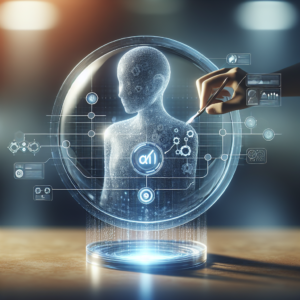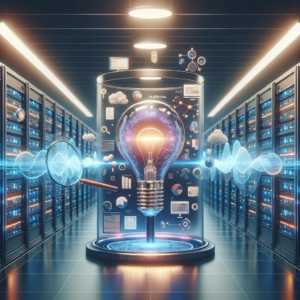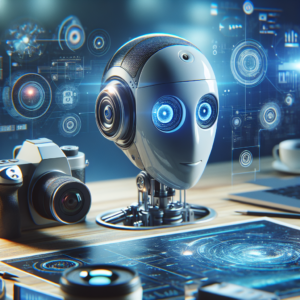Have you ever wondered how Artificial Intelligence (AI) will shape our future? It’s a fascinating topic that not only has captured the attention of tech enthusiasts but has also begun to influence our everyday lives in ways we might not even realize. As I explore the vast landscape of AI, I realize that it’s essential to understand its current applications, potential developments, and the ethical implications surrounding this transformative technology.
Understanding Artificial Intelligence
Artificial Intelligence refers to the simulation of human intelligence processes by machines, particularly computer systems. These processes include learning, reasoning, problem-solving, perception, and, in some cases, even creativity. I’ve found that AI is incredibly versatile, and its applications can be seen across various sectors, from healthcare to automotive and beyond.
The Evolution of AI
My journey into understanding AI takes me back to its roots in the mid-20th century when pioneers like Alan Turing and John McCarthy laid the groundwork. It’s astounding how far AI has come since then. Initially, AI focused on solving specific problems with limited datasets, but with the advent of powerful computers and massive amounts of data, the capability of AI systems has significantly increased.
- The 1950s-60s: The term “Artificial Intelligence” was coined. Researchers developed programs that could perform chess moves and solve algebra problems.
- The 1980s: Expert systems became popular, mimicking decision-making abilities based on knowledge bases.
- The 2000s onward: A surge in computational power led to breakthroughs in machine learning and deep learning, which allow AI to learn from vast datasets and become more sophisticated.
The Types of Artificial Intelligence
When I think of AI, I like to categorize it into three main types: Narrow AI, General AI, and Superintelligent AI. Here’s a breakdown that I find helpful.
| Type of AI | Description | Examples |
|---|---|---|
| Narrow AI | Specialized in one task, performing above human level. | Virtual assistants like Siri and Alexa, recommendation systems. |
| General AI | Has the ability to understand, learn, and apply intelligence to solve any problem – similar to human capabilities. | Currently, this does not exist but is a goal of AI research. |
| Superintelligent AI | Surpasses human intelligence and capability; this is still hypothetical. | Theoretical concept discussed in academic circles. |
It’s intriguing to think about where we are now and where we might go, particularly with Narrow AI, which is already deeply integrated into our daily lives.
Current Applications of AI
Artificial Intelligence is not just a futuristic concept; it is very much woven into the fabric of our society today. As I reflect on the current applications, I recognize how AI has enhanced efficiency and innovation across various industries.
Healthcare
In the realm of health, AI is revolutionizing diagnostics and patient care. I’m amazed by how AI algorithms analyze medical data faster and more accurately than human practitioners in some cases. For instance:
- Predictive Analytics: AI can predict patient deterioration before it happens, enabling preventive treatment.
- Personalized Medicine: Machine learning algorithms analyze genetic information to recommend tailored treatments.
- Robotic Surgery: Robots, powered by AI, assist in surgical procedures, increasing precision and recovery times.
Finance
The finance industry is another area transformed by AI. It’s astonishing to witness AI’s role in everything from fraud detection to algorithmic trading. Here’s how it’s making an impact:
- Automated Trading Systems: They analyze market trends in real time and execute trades at optimal moments.
- Risk Assessment: AI models assess creditworthiness more efficiently than traditional methods, making finance accessible.
- Fraud Detection: Machine learning analyzes transaction patterns to detect anomalies, protecting consumers.
Autonomous Vehicles
When I think about the future of transportation, autonomous vehicles often come to mind. It’s mind-boggling to think how AI systems process sensor data to navigate and make decisions on the road, aiming to create safer and more efficient highway travel. Some key aspects include:
- Sensor Fusion: AI combines data from cameras, lidar, and radar to create a 360-degree view.
- Route Optimization: AI evaluates traffic conditions and suggests the best route in real time.
- Safety Features: Advanced driver-assistance systems (ADAS) enhance driver safety by monitoring their environment.
The Future of AI Technology
While AI has made incredible strides, I’m curious about the future advancements we can anticipate. As researchers continue to push boundaries, I believe it’s only a matter of time before we see even more groundbreaking developments.
Advances in Machine Learning
One of the most exciting areas for future exploration is machine learning. I expect to see more sophisticated algorithms that can learn from fewer data points, making AI more adaptable and accessible. Some advancements might include:
- Meta-Learning: Also known as “learning to learn,” this would enable AI to improve its performance over time with less data.
- Federated Learning: This method allows AI to learn from decentralized data on devices while preserving user privacy, which is critical in today’s data-driven world.
Natural Language Processing (NLP)
As I think about how AI interacts with language, I can’t help but feel excited about the potential of NLP. This technology could bridge language barriers and change how we communicate. Possible future developments might encompass:
- Enhanced Conversational Agents: More human-like interactions, with emotional intelligence and contextual understanding.
- Language Translation: Real-time translation services could become more nuanced and contextually aware, enabling smoother conversations globally.
AI and the Internet of Things (IoT)
With the ongoing expansion of IoT, I believe AI will play an integral role in creating smarter homes and cities. Think of interconnected devices that communicate and operate efficiently. Here’s where I see AI making waves:
- Smart Home Integration: AI systems can automate tasks based on user behavior, enhancing comfort and energy efficiency.
- Urban Planning: AI can analyze data from various sources to optimize transportation, resource allocation, and public safety in cities.
Ethical Considerations in AI
As I marvel at the advancements in AI, I must also acknowledge the ethical concerns that arise. With great power comes great responsibility, and it’s crucial to navigate this landscape thoughtfully.
Bias in AI Systems
One of the pressing issues is the potential for bias in AI algorithms. I recognize that if AI systems are trained on biased data, they will perpetuate these biases. This can lead to unfair outcomes, particularly in areas like hiring, lending, and law enforcement. Addressing bias will require a mix of diverse data sets and rigorous testing.
Privacy and Data Security
As we incorporate more AI into our lives, the question of privacy becomes paramount. I often think about how much personal data we share and how it’s being used. Safeguarding private information while allowing AI to function effectively is a delicate balance. It’s essential for companies to implement strong data protection measures and transparency in how they use our information.
The Future of Work
Another area of concern is the impact of AI on employment. While I believe AI will create new job opportunities, there’s no denying that it may render some jobs obsolete. It’s crucial for society to adapt by providing retraining and upskilling opportunities for those affected by automation.
The Collaborative Future: Humans and AI
Looking ahead, I believe that the most exciting future is one where humans and AI coexist harmoniously. By leveraging the strengths of both parties, I envision a collaborative environment that enhances creativity, productivity, and innovation.
Augmented Intelligence
I often find myself thrilled by the concept of augmented intelligence, where AI assists human decision-making rather than replacing it. This collaborative approach could lead to breakthroughs in fields that require human intuition and empathy, such as healthcare, education, and creative industries.
Continuous Learning and Adaptation
As AI technology evolves, I anticipate a growing emphasis on lifelong learning for individuals in the workforce. Embracing continuous education will be vital in adapting to the rapid pace of technology and ensuring we remain relevant in our careers.
AI as a Tool for Social Good
I firmly believe that AI can be a powerful tool for social good. By addressing global challenges such as climate change, poverty, and healthcare accessibility, AI has the potential to drive positive societal change. I often imagine AI-powered solutions that optimize energy consumption and resources, improving the lives of countless individuals around the world.
Conclusion
As I reflect on my journey through the realm of Artificial Intelligence, I’m filled with optimism about the future. Yes, there are challenges to address, but the possibilities are undoubtedly exciting. By embracing AI while maintaining a commitment to ethical considerations, we can navigate the future thoughtfully and responsibly.
The question now is: How will you engage with this transformative technology? For me, it’s about fostering a deeper understanding of AI and advocating for responsible development, ensuring that the future we create is beneficial for everyone.






